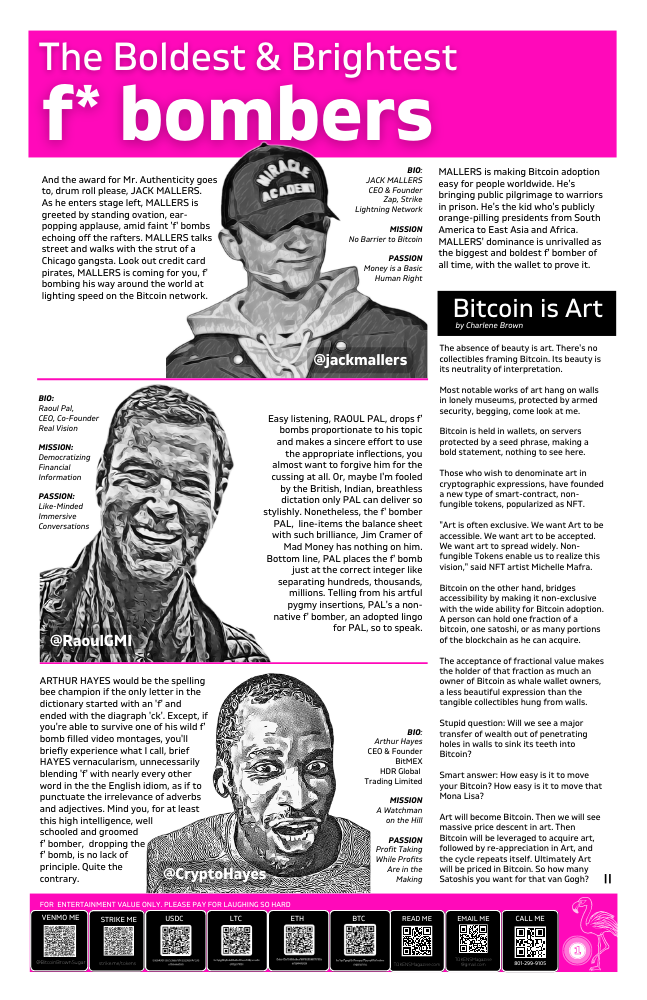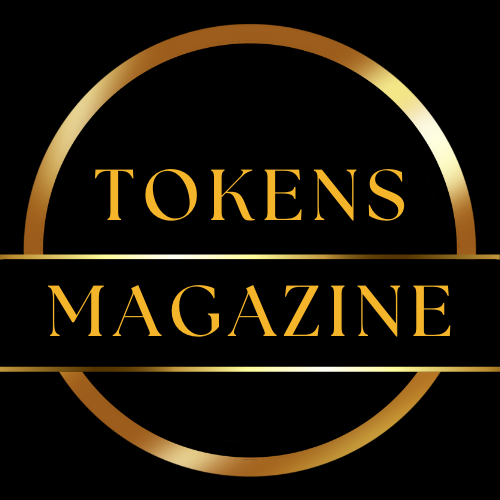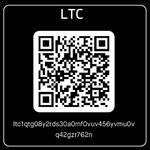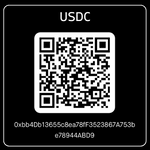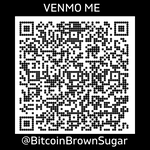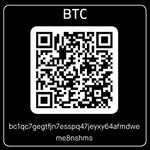https://tokensmagazine.com/images/2023/Tokens-Magazine-Bitcoin-2023-cover-01.pdf
https://tokensmagazine.com/images/2023/Tokens-Magazine-Bitcoin-2023-fbombers-02.pdf
Bitcoin is Art by Charlene Brown
The absence of beauty is art. There's no collectibles framing Bitcoin. Its beauty is its neutrality of interpretation.
Most notable works of art hang on walls in lonely museums, protected by armed security, begging, come look at me.
Bitcoin is held in wallets, on servers protected by a seed phrase, making a bold statement, nothing to see here.
Those who wish to denominate art in cryptographic expressions, have founded a new type of smart-contract, non-fungible tokens, popularized as NFT.
"Art is often exclusive. We want Art to be accessible. We want art to be accepted. We want art to spread widely. Non-fungible Tokens enable us to realize this vision," said NFT artist Michelle Mafra.
Bitcoin on the other hand, bridges accessibility by making it non-exclusive with the wide ability for Bitcoin adoption. A person can hold one fraction of a bitcoin, one satoshi, or as many portions of the blockchain as he can acquire.
The acceptance of fractional value makes the holder of that fraction as much an owner of Bitcoin as whale wallet owners, a less beautiful expression than the tangible collectibles hung from walls.
Stupid question: Will we see a major transfer of wealth out of penetrating holes in walls to sink its teeth into Bitcoin?
Smart answer: How easy is it to move your Bitcoin? How easy is it to move that Mona Lisa?
Art will become Bitcoin. Then we will see massive price descent in art. Then Bitcoin will be leveraged to acquire art, followed by re-appreciation in Art, and the cycle repeats itself. Ultimately Art will be priced in Bitcoin. So how many Satoshis you want for that van Gogh
FOR ENTERTAINMENT VALUE ONLY. PLEASE PAY FOR LAUGHING SO HARD
=
Full length May 5, 2023 001
23:37
Video quality
1080p
Everyone knows content is king. And I'm here to share with you the content that I'm creating, that I'm curating in Tokens Magazine, and my latest iteration of my curriculum for the 21 states of Bitcoin. So everyone who's heard of Bitcoin, this is a show that will teach you what Bitcoin is all about.
starting with the 21 features of Bitcoin. So the first one that we're gonna cover in today's presentation is Bitcoin is art. Bitcoin is art is something I developed from looking at all the different features of Bitcoin and I've broken down everything into 21 states. So here is the first state, Bitcoin is art.
by yours truly, Charlene Brown. I am the publisher of Tokens Magazine and the host of Content is King, which reminds me to let you know that October 25th, 2023, there will be a big convention called Content is King, hosted by Tokens Magazine and myself, Charlene Brown, in collaboration with Sean Finnegan, the Hive,
Taxhive is a brand of Kevin O'Leary. It's one of the brands Kevin O'Leary is an investor in. It's writes in Orem, Utah. And what they do is they help small businesses or any business structure their tax planning and preemptively, like not waiting till you're ready to report your taxes, but how you're gonna structure your company, are you gonna structure all the different aspects
at a tax advantage for your business. They also have, they have Hive Law, they have Tax Hive, and they've got some great things there. I learned so much from the last conference a few days ago, talking about how to structure your LLC, the different types of LLC, limited liability partnerships, holding companies, trust accounts, all the things that you will need.
to structure your business correctly. But let's get into the meat and potatoes of today. The 21 states of Bitcoin as a matter of features. So the first feature of Bitcoin that we're gonna cover is Bitcoin is Art by Charlene Brown. The absence of beauty is art. There's no collectibles framing Bitcoin. It's beauty, it's ins neutrality.
the neutrality of interpretation. Most notable works of art hang on walls in lonely museums, protected by armed security, begging for everyone to come and look. But Bitcoin, on the other hand, is held not in paintings on a wall, but Bitcoin is held in wallets, on servers protected by a seed phrase or a secret password, making a bold statement, nothing to see here.
Bitcoin at the same time, it's neutral, it's transparent, but the anonymous, it's anonymous. So anyone can hold Bitcoin and no one needs to know who holds Bitcoin, but everyone can and everyone, Bitcoin is visible on the blockchain, but your personal identity is protected.
through your seed phrase, through the anonymous nature and the neutral nature of Bitcoin. Now, why is Bitcoin art? Those who wish to denominate art in cryptographic expressions have founded a new type of smart contract. It's called the non-fungible tokens, popularized as NFT. Everyone, if you've never heard of NFT, this is the first time you're hearing about NFT. NFT is a digital,
representation of art or other non-fungible tokens. Art is one way of expressing NFTs. Why is it non-fungible? Non-fungible means that it's unique. It's a one of a kind. Like the Mona Lisa, there's only one painting. Everything else is a replica. Everything else is a copycat. So for something that has one original, like every human being is an NFT. So you can tokenize yourself.
as an NFT because you, me, myself, Charlene, I am an NFT. There's no other of me. And even if I had a hundred babies or I have only one, but my child would become its own NFT or his own NFT. He's not a replica of me, even though I'm his birth parent. And so every NFT non-fungible token is unique.
It's got unique properties and it's only one version of it. Whereas Bitcoin as an asset and as other tokens, they are identical. So it's like a dollar bill. Even though a dollar's a dollar's a dollar. You can make as many millions and billions of the dollar bill or 25 cent piece, but an NFT is a one of a kind, is not one of many. It's one of a kind.
And so that's why it's called a non-fungible token. Now, why is this important to understand? It's because in tracking and tracing an NFT, it's like your car. Actually, that's probably a better example of an NFT because you know who's been tokenizing for as long as you can? So Ford, for example, I have a Ford F550 truck and bus and that's a non-fungible token because it has a unique
ID, it's called the VIN number. So every vehicle produced by a manufacturer like Ford or Chevy or Tesla has a VIN number and that creates the non-fungible properties of that particular vehicle. And it doesn't matter as it changes ownership, that ownership is tracked by the VIN number, the vehicle identification number.
that would be the NFT number. And each car on the road, each car, every car being made is an NFT. It's one, it's unique, even though they make many cars, each one has its own VIN number and NFT token. So the governments and the cities and the states have been tokenizing, like they don't make the vehicles.
They don't do anything with vehicles. They don't provide safety for the vehicles. They don't even do anything. They just charge you to own a vehicle. Your cities, your states, your governments charge you to own a vehicle because you have to register and you have to pay that registration every year. And they have been monetizing on NFTs like vehicles for a long time. And the artistic, the creativity and who created that particular vehicle.
doesn't get to monetize on it over and over again. Like once you buy the car from Ford or Ford makes a car, sends it to the dealership, they get paid when that car is purchased or when they sell it to the dealers, but they don't get paid every time the car is sold in the future. What if Ford, the manufacturer, what if the Tesla, Elon Musk would get a royalty every time that Tesla is sold or traded hands? What if the...
the Chevy manufacturer would get a royalty every time that same car is traded. Well, somebody is taking that position and that's your state, that's your government. They've come in and started monetizing and charging for the art that other people created. They didn't do anything. Of course they need the money to build roads and all that kind of stuff, but they're tokenizing on these non-fungible tokens like cars and other unique properties.
and even though they don't own it, you, the beauty now of NFTs is that you, the creator, the one who originated the property, can't actually trace that ownership. So ownership and creation has been segregated. You know, you have a patent or you develop something, you own it, but you can trade the use of it to somebody else. Well, if someone else buys a car or buy that art,
Now that it can be tracked on the blockchain so that the owner can continue to receive royalty, even as that item or asset or property is traded in perpetuity forever. You can collect on that. And one of the things that's really, really important about NFT apart from the fact that it's non-fungible, unique, and it's one of a kind, can be owned by
one person, but now you can sell shares in that one item. You can fractionalize your NFTs and many people now can own the car. Kind of like having a co-signer on the car. When you take out a loan, they want you to have a co-signer. If you don't have enough money or if you don't have good credit ratings, you can have multiple owners of that vehicle. You can add different ownership on the title, but the NFT process and on the blockchain can track and trace that for you.
So Bitcoin is art. And why I say Bitcoin is art? Because every cryptocurrency created is a child or a copy of Bitcoin. Bitcoin is a first and only cryptocurrency up until people decided to make a copy of it and create other similar cryptography type blockchain platforms. And we have the Ethereum blockchain, which was the...
platform that allowed you to now fractionalize and create non-fungible tokens and be able to trade those. Art is often exclusive. We want art to be accessible. So for example, the person who owns the Mona Lisa can now sell parts of that ownership to other people through the blockchain. We want art to be accepted. We want art to spread widely.
and non fungible tokens enable us to realize this vision said one of my friends was an NFT artist, Michelle Moffer. She goes by mommy crypto online. Her hand or handle on Twitter is mommy crypto, but she's big into NFTs and she's an artist. She does the cover of Bitcoin of my magazine, tokens magazine. Her artwork is everywhere across.
the NFT community and the NFT sphere in the metaverse. For example, I own the original art that Mame Crypto created for Tokens Magazine cover, the 2021 edition and some other pieces that she created for us. I purchased those from her in the physical sense, but someone else owns the digital version of that. So art cannot only have the original
tangible, but now you can have the digital, the ghost of the art can still earn money, can still be of value. So every piece of art, every article created has a digital value, also has a real value, the tangible that you can touch and feel. But the digital is actually more expensive now, like the art that I own in tangible form.
someone else owns in digital form, and that art in the metaverse has gained more value in trading than the one I purchased from the artist. This is huge, guys. You can actually trade both versions of your art. You can trade the original tangible material piece, and you can also trade the digital piece. And it will have that.
life cycle forever in the digital world. So even if your art, let's say the piece that I have got wet, because it's a paper produced art, she did it on art paper, a beautiful piece. If that gets wet or damaged or destroyed, that that particular artwork can still live forever in the metaverse through its digital life and its online life, its virtual life. And that's what art.
on the blockchain allows you to do. It allows you to take everything from the physical world and transpose the exact replica in the digital world. And it's called minting, right? You mint that art in the digital world. Now it has a life of its own. It's like your ghost, you know, when we die, they bury our bodies, our bodies rot in the ground, but we actually, our spirit, our souls continue to live in another sphere, in another world. I don't know where.
haven't been on that side yet. But it's the same thing with art. You, the life of the art can continue in digital and virtual format. Now, Bitcoin on the other hand, as an asset, as a currency, what it does, it bridges the accessibility of art by making it non-inclusive to the wide public, to everyone and the ability for Bitcoin to be adopted everywhere.
And one way of doing that is through art. These people decide, okay, let me get some art or put my art that I've already created on a blockchain, not the Bitcoin blockchain, but the Ethereum blockchain or other blockchains that are popping up. There's other platforms that allow you to do that. A person can hold one fraction of a Bitcoin. They can also hold a fraction of any piece of art. If that piece of art...
has been fractionalized by its owner. One Satoshi of Bitcoin is the very smallest denominator of Bitcoin. It's kind of like a kilowatt of energy, which is a part, we're gonna talk about energy, how Bitcoin is energy in another edition, but this one is focused on art and you can fractionalize everything across the metaverse, across the blockchain, so that people can own individual.
Pieces individual value in one piece. What if you own a piece of the Mona Lisa? I think there's a opportunity to do that once the owner Fractionalizes it and puts it on the blockchain and I think you can also own a piece of that value if they were to tokenize The the real value the physical value of the Mona Lisa as well as what companies do
They create a brand, they create a company like Tesla, and they fractionalize that company by selling stocks. You can own one stock, you can own even smaller denomination, a fraction of a fraction of a stock. You can own a lot of stocks in a company. It's the same thing that's been done over time. When someone creates something, they can tokenize it. But now we have a way to do it on the blockchain, and that's what Bitcoin has brought to this new digital world. And so,
I've got this article published, the 21, not, in my article, Bitcoin is Art is one in the series of my curriculum that I teach at the university, formerly at Utah Valley University, going through the 21 different states and 21 different features of Bitcoin, of which Bitcoin is Art is one of those features. Bitcoin...
allows us to now look at things, not only in the physical sense, but in the digital sense. How do you own value? How do you transfer value? And that's what's happening. The acceptance of fractional value makes the holder of that fraction as much an owner as, it doesn't matter what fraction you own, you're an owner in that particular asset or in that particular piece of art. And you're as much as owner.
as anyone that owns a lot. Doesn't matter what fraction you own, you are an owner. A less beautiful expression of art than the tangible collection that's hung on walls. You can walk around now with your wallet and say, look, I own Bitcoin, I own Ethereum, I own this NFT. You know, there's so many things popping up in the NFT trend and it's not going away folks. Art is just the beginning of expressing.
the digital life or the virtual life of everything that can be owned. Like I talked about the cars, your car, the DMV, the Department of Motor Vehicle, owns the digital version of your car. They own the VIN number and they tax you based on that. You're paying them to own your actual valued item, your property. What if it was the other way around where you getting paid for the things you own?
but with other people, not you paying someone to own a piece of your stuff. So the whole fractionalization, monetization, digitization is flipping what we've been doing on its head because we've given away ownership to other people. We've licensed away our rights to the state, to the cities, to the Department of Motor Vehicle. Now we're getting into space where we're taking control back off that.
digital life of that ownership and we can do that both digitally and in the real world In real value. So here's the here's the question for you. Will we see a major transfer of wealth? out of Penetrating holes out of art that's on the wall. Will we see that value transferred onto the blockchain? Bitcoin
and cryptography is sinking its teeth into the traditional art because now people like, okay, I wanna own something that has a life forever. I'd rather own an NFT than own something on the wall because when I go and I travel, I don't have to worry about someone breaking into my house and removing my painting or breaking into my vault at the bank and stealing all my valuable properties.
I can have it in my wallet, on my phone. So people are going to start, yes, selling off their artwork that's on the wall and taking that money and putting it into Bitcoin. They're gonna be trading in their cars. They have a garage full of Ferraris and McLarens and Maseratis. They're gonna be transferring that value, getting rid of their physical assets, taking that money.
putting it into the blockchain, specifically into Bitcoin and some of the other top crypto coins. That is happening, folks, because you cannot, matter of fact, if you have a lot of money in the bank, you have a lot of assets in your house, you can't travel with it. You can't take it wherever you go. You can't monetize it away from your locality. So what you can do is you can transfer that value into crypto and put it in a wallet. You cannot, matter of fact, if you're going out of the country.
The most cash you can take with you is $10,000. I don't know why they make it so low. I mean like $10,000 that's like one night on a cruise on some of these expensive cruises. But the point is you can only take $10,000 of cash. But if you have your digital wallet, your crypto wallet, your Bitcoin wallet, you can take as much as you want and you can use that money anywhere in the world as long as you have an internet connection. So we're seeing a major shift.
from wealth out of art, traditional art, and going into crypto, going into Bitcoin. And then you know what's gonna happen. We're going to see this cyclical nature starting to come about where people are, they're selling their art, they're trading their art, taking the cash, buying crypto. That's gonna make a significant reduction in the value of art. I'm talking about...
major art piece. I'm talking about the value of works that have been created by, you know, popular artists, very, um, notable artists. That value is going to go down as people start selling off that art and putting that money into Bitcoin and other cryptocurrency. But what's going to happen is now that say I was able to sell my million dollar art, original art, and take that money and buy Bitcoin. Now that art.
is valued less because so many people are selling it. Now, the same piece of art I just sold for a million dollar, I could possibly buy that again next month or next quarter. I could acquire it back for less than I sold it, maybe at half the price. If I sold it for a million, maybe I could buy it back for a half a million because the value is so, the inflation, the prices are so deflated that the value is going down so much.
it still wraps such a short space of time that you may be able to reacquire all the art that you offloaded and that cycle is going to continue where you can now have both the Bitcoin and the artwork at half the price. This is what's happening. Nobody's talking about this. So how much Satoshi's do you want for that Vango? By the way, this podcast, this message is for entertainment value only.
I'm just doing this for laughs. So if you're laughing, if you think what I'm saying is funny, if you think it's a big joke, matter of fact, you're laughing because it's not funny. You still owe me for that laugh. So go ahead and send me some Bitcoin. I take any kind of currency, anything that's acceptable for trade. I will take it Venmo, but read my articles at tokensmagazine.com. I will cover the 21 states of Bitcoin.
episode is covering Bitcoin is Art. I'm your host Charlene Brown, publisher of Tokens Magazine and host of Content is King podcast. Thank you for watching.
TOKENS Magazine Contact: 801-299-9105
READ ME TOKENSMagazine.com
EMAIL ME: TOKENSMagazine @gmail.com
CALL ME: 801-299-9105
VENMO ME: @BitcoinBrownSugar
STRIKE ME: strike.me/tokens
